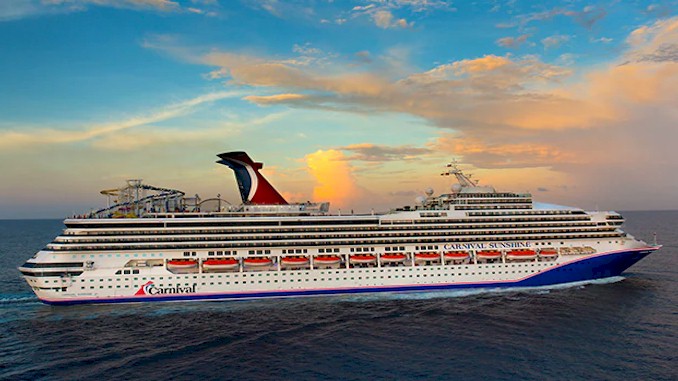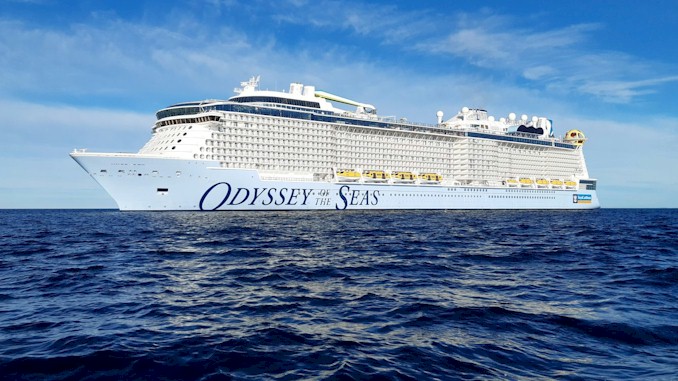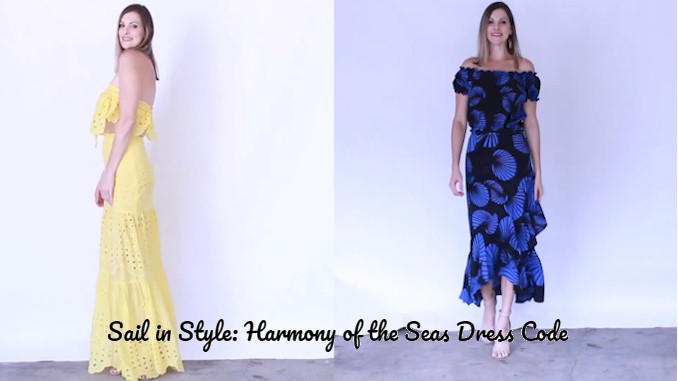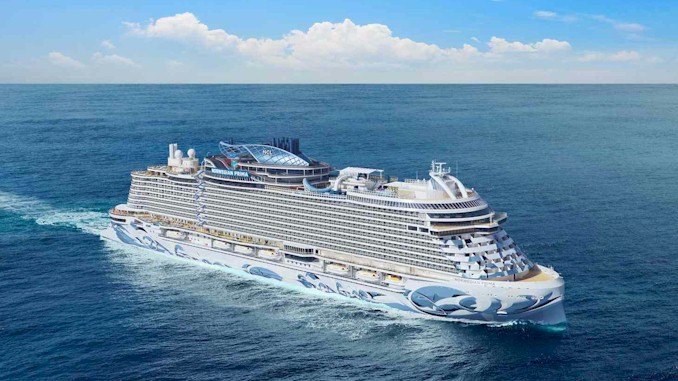Finding Your Way on a Cruise Ship: Insider Tips & Tricks
If you are booking a cruise on a large cruise ship, then you may have a problem finding your way around. I have been on multiple cruise ships and I always have some trouble finding my way around. However, now that I’ve been on tons of cruise ships, I know some tips and tricks for finding my way around. They are:
Finding your way on a cruise ship can be made easier by studying the ship’s map and using landmarks to orient yourself. Pay attention to the ship’s layout, including the location of staircases, elevators, and public areas. Take note of the colors and decor in different areas of the ship, which can help you recognize where you are. Finally, don’t be afraid to ask the ship’s crew for directions if you need help. With these tips, you’ll be able to confidently navigate your way around a cruise ship.
While these tips will certainly help you navigate your way around a cruise ship, there is even more valuable information that I have to share. In the following sections of this blog post, I will dive deeper into each of these tips, providing you with practical advice and real-world examples. Additionally, I will share some insider tips that only seasoned cruisers know about. By the end of this post, you will have a complete understanding of how to confidently find your way around a cruise ship, ensuring that you have the best possible cruising experience. So, keep reading to discover all the valuable insights I have to offer!
Study the Ship’s Map to Get Your Bearings
One of the most effective ways to navigate a cruise ship is to study its map. Most cruise lines provide a detailed map of the ship in each cabin, which highlights the locations of important areas like restaurants, bars, entertainment venues, and staterooms. Take some time to familiarize yourself with the map and the ship’s layout, paying close attention to the location of your cabin and the areas that you plan to visit frequently.
Another useful tip is to look for landmarks on the ship’s map. These can be anything from large sculptures or artwork to distinctive features like a central atrium or a movie theater. Once you have identified these landmarks, you can use them to orient yourself and find your way around the ship. For example, if you know that your cabin is located near a large sculpture, you can use that as a reference point when navigating to other areas of the ship.
It’s also a good idea to take note of the location of staircases and elevators on the ship’s map. These can be useful shortcuts when navigating the ship, especially during peak times when the elevators may be crowded. By knowing the location of nearby staircases, you can easily walk up or down a few decks to get to your destination.
In addition to studying the ship’s map, many cruise lines offer interactive maps on their mobile apps or touch screens throughout the ship. These maps allow you to easily search for specific areas or amenities and can even provide turn-by-turn directions to help you get there. If your cruise line offers this feature, take advantage of it to make navigating the ship even easier.
By taking the time to study the ship’s map and familiarize yourself with its layout, you can confidently navigate the ship and ensure that you never get lost. The map is a valuable tool, so be sure to keep it with you at all times and refer to it as needed.
Use Landmarks to Orient Yourself
One of the most effective ways to navigate a cruise ship is to use landmarks to orient yourself. Landmarks can be anything from distinctive artwork or sculptures to features like a central atrium or a movie theater. By taking note of these landmarks, you can use them to guide you to different areas of the ship.
For example, if you know that your cabin is located near a large sculpture or painting, you can use that as a reference point when navigating to other areas of the ship. Similarly, if you know that the main dining room is located near the ship’s central atrium, you can use that as a guide to help you find your way.
Another useful tip is to look for directional signs throughout the ship. Most cruise ships have signs that indicate the direction to various areas of the ship, such as the pool deck, restaurants, or the theater. By following these signs, you can easily navigate your way around the ship.
It’s also a good idea to take note of the colors and decor in different areas of the ship. For example, the pool deck may be decorated with bright colors and tropical motifs, while the spa area may be decorated in a more serene and calming style. By taking note of these design elements, you can easily recognize where you are and use them as a reference point to navigate around the ship.
If you’re having trouble finding your way around the ship, don’t be afraid to ask for help. The ship’s crew members are there to assist you and can provide directions or escort you to your destination. Additionally, many cruise lines offer guided tours of the ship, which can be a great way to get oriented and familiarize yourself with the ship’s layout.
Using landmarks to orient yourself is a great way to navigate a cruise ship. By taking note of distinctive artwork or features, following directional signs, and paying attention to the ship’s decor, you can confidently find your way around the ship. And if all else fails, don’t hesitate to ask for help from the ship’s crew members.
Pay Attention to the Ship’s Layout and Decor
To effectively navigate a cruise ship, it’s important to pay attention to the ship’s layout and decor. Familiarizing yourself with the ship’s design can help you quickly identify where you are and where you need to go.
One way to do this is to explore the ship as soon as you board. Take note of the location of your cabin and the main areas of the ship, such as the restaurants, pool deck, and theater. Look for stairwells and elevators, and take note of the different levels of the ship.
It’s also a good idea to pay attention to the ship’s decor. Many cruise ships have themes or designs that are carried throughout the ship. For example, a ship with a tropical theme may feature palm trees and bright colors, while a ship with a more elegant theme may feature chandeliers and plush seating.
By paying attention to these details, you can quickly recognize where you are and use that information to navigate the ship. For example, if you see a large chandelier, you may know that you are in the ship’s main lobby. If you see a mural of a tropical beach, you may know that you are on the pool deck.
Another useful tip is to bring a copy of the ship’s layout with you. Many cruise lines provide a map of the ship in the cabins or at guest services. You can also usually find a map near the elevators or stairwells. Keep this map with you as you explore the ship, and use it to orient yourself if you get lost.
In summary, paying attention to the ship’s layout and decor is an important part of navigating a cruise ship. Take time to explore the ship, pay attention to the design elements, and bring a copy of the ship’s layout with you. By doing so, you’ll be able to confidently find your way around the ship and make the most of your cruise vacation.
Don’t Be Afraid to Ask for Help
Even with all of the tips and tricks for finding your way on a cruise ship, it’s still possible to get lost or disoriented. In these situations, don’t be afraid to ask for help.
Cruise ship staff are trained to help guests navigate the ship and answer any questions they may have. If you’re feeling lost or unsure of where to go, don’t hesitate to ask a crew member for assistance.
Guest services is another great resource for help. This is typically where you can find information about onboard activities, dining options, and excursions, but they can also assist with any navigation questions you may have.
Additionally, many cruise lines now have apps that you can download to your smartphone that provide information about the ship’s layout, activities, and dining options, as well as allow you to chat with other guests and access your account information. These apps can be a great resource for finding your way around the ship and staying informed about onboard events.
In summary, if you’re feeling lost or disoriented on a cruise ship, don’t hesitate to ask for help. Crew members and guest services are there to assist you and ensure you have a great cruise experience. Utilizing technology such as cruise line apps can also be helpful in navigating the ship and staying informed.
Insider Tips from Seasoned Cruisers
While the tips we’ve covered so far are a great starting point for navigating a cruise ship, there’s no substitute for the advice of seasoned cruisers who have been there, done that.
Here are some insider tips from experienced cruisers to help you find your way around the ship:
- Use the Aft Elevators: Many cruisers recommend using the elevators at the back of the ship, also known as the aft elevators. These are often less crowded than the elevators in the front or middle of the ship, and can be a faster way to get around.
- Pay Attention to the Carpet: Many cruisers recommend paying attention to the carpet in the hallways of the ship. The carpet often has a unique pattern or design that can help you identify where you are and which direction you need to go.
- Look for the Quiet Spaces: Cruise ships can be busy and noisy, but there are often quiet spaces onboard that are perfect for relaxation or finding some peace and quiet. Look for areas such as the library or the promenade deck, which tend to be quieter than other areas of the ship.
- Follow the Crowds: If you’re unsure of where to go, follow the crowds. For example, if you see a group of people walking towards the theater, it’s likely that there’s a show starting soon.
- Memorize the Ship’s Colors: Some cruisers recommend memorizing the colors of the ship’s carpets, furnishings, and decor. This can help you quickly identify where you are and which direction you need to go.
By incorporating these insider tips from experienced cruisers into your navigation strategy, you’ll be able to confidently find your way around the ship and make the most of your cruise vacation.







